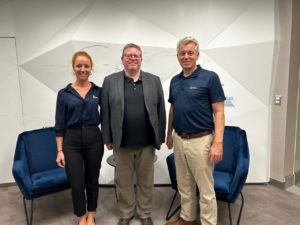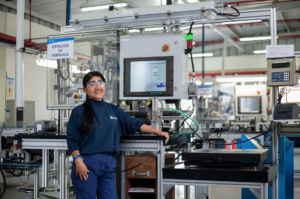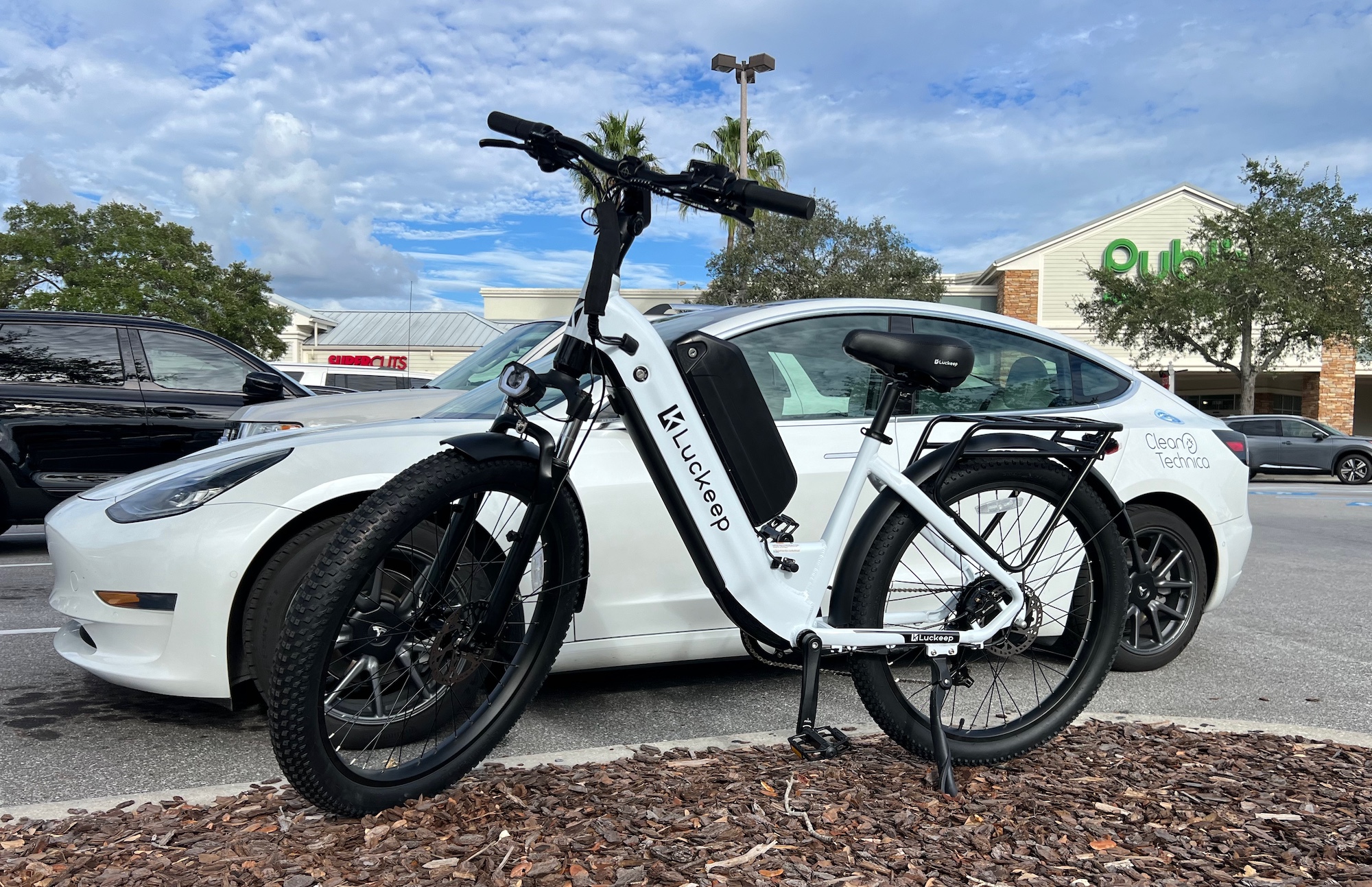During a visit to Chile in April, IM Editorial Director Paul Moore sat down with Orica’s Brian Gillespie – President Latin America and Group Executive; and Francisca Saieh – Head of Marketing and Technology Latin America at its Santiago corporate office for some unique insights into the Latam explosives and blasting market – and the types of innovations Orica is bringing to Latam customers – which include advanced digital solutions
When did Orica first enter the South American market and how has the business grown? Is it a competitive market?
BG: Orica’s origins date back to the Victorian goldfields in 1874 and then evolved to ICI, the large UK chemical group and its operations in Australia – which from 1971 were known as ICI Australia and with Orica formed in 1998 after ICI sold its shareholding. Through various acquisitions as well as organic growth, Orica became the world’s leading mining and infrastructure solutions providers. A lot of what today is Orica Latam was either also originally part of ICI or acquired as part of assets taken over from Dyno Nobel in 2005. Most recently we acquired the major Peruvian explosives company EXSA, in 2020. It was a really pure play company and a really good fit for Orica, also having a fantastic but underutilised manufacturing facility in Lurin. Today, Lurin is one of our two large global manufacturing hubs, the other being Gomia in India. Gomia primarily is serving the needs of the European, Australian, African and Asian markets; with Lurin primarily serving the Americas. We also have regional manufacturing centres in all our main countries of operation including in Chile, Colombia and Brazil as well as Panama. On competition in the region, of course Chile’s Enaex is a major player, along with Famesa in Peru and Spanish group MAXAM. But I would say Orica has the most advanced range of solutions in the market – as an example we remain the only company with a patented wireless blasting solution.
IM Editorial Director Paul Moore with Brian Gillespie – President Latin America and Group Executive; and Francisca Saieh – Head of Marketing and Technology Latin America

Can you expand on what these sites produce, and how that relates to AN supply and your final products?
BG: These sites produce all or some of our main products which include packaged and bulk emulsion explosives, initiating systems (IS) including electronic blasting systems (EBS), det cord, boosters and shock tubes as well as ANFO bags and some IS raw materials. The base explosive chemical product ammonium nitrate is mainly produced in Australia in three plants – two on the east coast (Kooragang Island and Yarwun) one in the west coast (Yara Pilbara Nitrates joint venture near Karratha) as well as Carseland in Canada and Bontang in Indonesia. Actually, in Latin America we do not have any AN production – so we buy it from other sources in Brazil and Chile or import it from Europe or Australia. We take high quality AN prill and use it as part of proprietary high energy emulsion formulations that we manufacture using additives like mineral oils, hydrocarbons and solvents along with different processes to produce various porosities and densities in the final products, translating to different attributes in blasting. Initiating systems themselves are increasingly digital, wireless and high-tech.
Are there any notable general aspects about the explosives and blasting market in Latam?
FS: Firstly, I would say the sheer size of the customers. We have fewer customers than other regions but they are very big – the average size of mine in throughput and daily tonnage is very large. These are top tier miners, many of which are owned by global mining houses – so there is an absolute commitment here to safety as well as productivity. Secondly, they also have a thirst for technology which really helps us as we are often the ones pushing the envelope. It is a good time to have Orica’s portfolio – many of the solutions are unique and world-firsts and we have spent over a decade getting it right. Its also worth mentioning that the mines here are producing future facing commodities – of course copper and gold but also lithium and others – copper alone represents 66% of our business here. So there is a great mining future here for that reason also. And aside from Chile, Peru and Brazil where we have a major presence, in addition we have offices in Bolivia and Colombia. And we have really diverse teams in Latin America with a large proportion of female employees across office, sales and engineer roles.
Orica Latam has a strong proportion of female employees, including in operational roles

How fast has the IS and EBS market including Orica’s i-kon™ III been growing in Chile? And what about wireless blasting?
BG: Things are pretty advanced today in Chile where most of the large mines there, as well as in Brazil and to some extent in Peru and Colombia have already moved away from non-electric to electronic blasting and particularly our i-kon™ III solution that you mention as well as products from competitors. But the most advanced customers are also now moving to the next stage with our patented WebGen™ fully wireless IS, which completely eliminates the need for down-lines and surface connecting wires. As stated we are the only company to offer this – we believe we have the best digital technologies together with wireless IS.
Mining is inherently conservative – how do you as a company get these new technologies into the market? What is the penetration of WebGen™ today in Latin America?
BG: There either has to be a production business case or a safety imperative or a combination of the two. We are confident that we offer the safest and the most efficient products and systems available. With wireless detonation you have a real safety advantage with no wires criss-crossing the benches – plus you have a production advantage as you can now use that bench for vehicle movements right up to just before blasting itself. You can even spray water in those areas which you can’t do with non-wireless detonation. For WebGen™ we now have nine customers in Latin America spread between Brazil, Chile and Peru. I can’t say who those are but they are top tier miners. And for H1 2023 that’s actually slightly ahead of where we thought we would be. And that’s us having been able to prove that production and safety advantage on-site. I think we also have the right people and the right expertise – our blast engineering team works really closely with the customers to offer different solutions. They also keep detailed case and project records so we have a lot of data and experience we are able to share, with customer permissions of course. Orica has always been well known for its technical expertise – two years ago we made a decision to get all of our technical experts back together under one organisation in Latam within which we now have 150 blasting experts dedicated to blasting science. A lot of them formerly reported to different people depending on how we were running a particular project and customer site – today they are report to one leadership team allowing them to concentrate more on their technical expertise. This is important – as the products become more and more digital, and we have more advanced wireless detonation, then more so than ever we need the right experts to be able to design and optimise blasts around these products. For major customer projects we will devote several experts to dealing with that project specifically who may also be based at that site for all or part of the project. In fact of the 150 engineers, 75 of them or 50% are dedicated to particular customers. The team is headed by Daniel Serkovic, a mining engineer and our Senior Manager – Orica Blast Engineering. He has an MBA and a background both in consulting in Australia then roles with Vale and Rio Tinto before he started with us as the Regional Manager Latin America for GroundProbe.
Orica’s plant in Lurin, Peru is a state of the art facility

Do the mines sometimes carry out blasting themselves, use contractors or work with the explosives and blasting specialists like Orica directly? What about the delivery vehicles?
BG: All of these situations can exist but in this part of the world, contracted drilling is more usual. For blasting, it tends to be either the miner or the supplier – and more and more the top tier miners are moving towards using what we call down the hole service from us – which includes blast design, loading the holes, detonation, procurement of all the detonators and explosives. Of course, they always remain involved in the blast design as these companies have very experienced mining engineers and geotechs – they have their own mine plan and blasting plan that they want to achieve. We will also own operate the explosives delivery vehicles – ie the Mobile Manufacturing Units or MMU™s, with the exception of Colombia where a government body technically owns all MMUs due to regulations, plus we are responsible for the and storage of the explosive products and IS. These vehicles – such as our state of the art Bulkmaster™ 7 units, are complex machines with internal control systems including our BlastIQ™ which enables digital blast designs created in SHOTPlus™ to be wirelessly transferred to the MMU™ as well as LOADPlus™, a proprietary in-cab smart explosives delivery control system. They control the locating and the loading of the holes independently and what formulations go where. And because of all that the MMUs are also expensive pieces of kit – north of $1.5 milllion for the most advanced versions.
Are autonomy and greater sustainability the next step for your MMUs? What about greater autonomy and safety underground?
BG: We certainly have active program working towards that – I can’t reveal any details but our Group Executive & Chief Technology Officer Angus Melbourne is heading that up. And yes we are looking to make our vehicles as sustainable as possible – firstly making sure the diesel we are using as much as possible will be reused or has been recycled and beyond that other power sources such as battery electric. And you are already well aware of our now well proven Avatel™ solution, which is the most advanced underground development charging system ever designed and eliminates the need for traditional tie-ins and other physical wired connections from the charging cycle. It enables a single operator to prepare the development face and charge explosives from the safety of an enclosed cabin, several metres from the face.
In 2022 Orica-owned GroundProbe launched BlastVision® – which provides ‘revolutionary’ blast visualisation and analysis data – how does that tie into Orica’s solutions?
FS: A lot of customers are looking at using WebGen™ and BlastVision® together. BlastVision is huge in terms of safety and making sure that the blast is doing what you want it to do. And being drone-based – if you as a mine have a high quality drone for high quality digital vision then you can put it into the BlastVision algorithm and get on-bench instant diagnosis of a blast. It basically takes custom high-speed drone footage of a blast as it happens and using proprietary algorithms and AI, converts the footage into analytics data. You can see in different colours what hole has blasted where and slow it down to see how the blast pattern has gone. And you can see where any flyrock ended up. Orica’s suite of technology also includes FRAGTrack™, a state-of-the-art fragmentation measurement tool designed to provide rapid insights into the outcome of the blasting process. It can be mounted on a face shovel, on a conveyor, on a gantry to scan passing trucks or at the crusher itself. We have at least 30 customers in Latam using FRAGTrack™ with the gantry set-up being particularly in demand. It can warn of oversize heading to the crusher but mainly it is giving an indication of the blasting result and if you need to adjust the explosive energy for example.




